Midway
 for sequences of war violence and related images, language and smoking.
for sequences of war violence and related images, language and smoking.
Reviewed by: Casey Scharven
CONTRIBUTOR
| Moral Rating: | Offensive |
| Moviemaking Quality: |
|
| Primary Audience: | Adults |
| Genre: | War History Action Drama IMAX |
| Length: | 2 hr. 18 min. |
| Year of Release: | 2019 |
| USA Release: |
November 8, 2019 (wide release) DVD: February 18, 2020 |
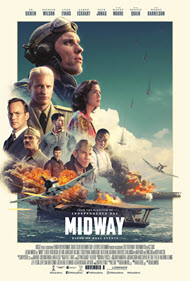

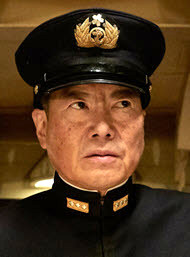
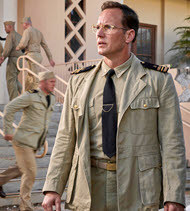
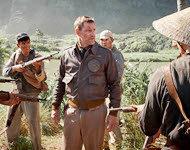
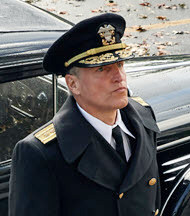
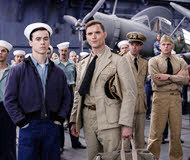
Bravery / courage / self-sacrifice
Heroism
The costs of freedom
What is the Biblical perspective on war? Answer
War in the Bible
Armies in the Bible
What the Bible says about caring for widows
Did God make the world the way it is now? What kind of world would you create? Answer
Why does God allow innocent people to suffer? Answer
What about the issue of suffering? Doesn’t this prove that there is no God and that we are on our own? Answer
ORIGIN OF BAD THINGS—Why are they in our world if a good God created us? Answer
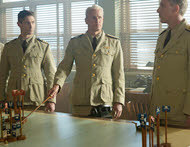

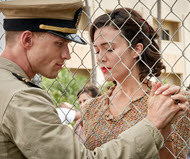
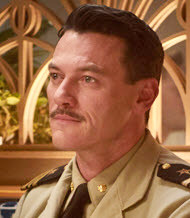
| Featuring |
|---|
|
Ed Skrein … Lieutenant Richard “Dick” Best Mandy Moore … Anne Best Patrick Wilson … Edwin Layton Luke Evans … Lieutenant Commander Wade McClusky Woody Harrelson … Admiral Chester Nimitz Dennis Quaid … Vice Admiral William “Bull” Halsey Alexander Ludwig … Lieutenant Roy Pearce Aaron Eckhart … Lieutenant Colonel Jimmy Doolittle Darren Criss … Lieutenant Commander Eugene Lindsey Nick Jonas … Bruno Gaido Jake Weber … Rear Admiral Raymond Spruance See all » |
| Director |
|
Roland Emmerich |
| Producer |
|
AGC Studios Centropolis Entertainment See all » |
| Distributor |
Let’s set the stage. The United States entered World War II after the Japanese bombed Pearl Harbor in December 1941 and for the first few months of the war the Japanese Empire recorded victory after victory. The US finally strikes back against Japan with the daring raid by Lt. Col. James Doolittle and the Doolittle Raiders in April 1942 and halted a Japanese advance in the Coral Sea in May 1942. After the raid on Japan, the Japanese decided to attack Midway Island to lure the American aircraft carriers into a decisive battle. The movie focuses on real characters from the battle, both on the American and Japanese sides, and shows those from senior leadership to those who did the fighting.
As a person interested in the history of WW II, I wanted to see the movie from the very first trailer that was released. The CGI looked remarkable for the ships and the flying scenes, and I could not wait to see the final movie. Technically the movie production is both superb and disappointing. A great amount of the CGI is spot-on and is truly incredible—the depiction of the ships (both American and Japanese) is super, even more so in that none of the ships from that battle still exist. However, there are times where something is not correct and I had to wonder, “How did they get one part so correct, and miss something else so easy?”
The characters seem mostly in line with the history books, although as with other historical movies, much of the personal conversations are written for the movie and may or may not have occurred. There are some embellishments and changes to history, however this is to be expected and did not seem to impact the overall theme.
In a surprise, there are no issues with sex. There is a scene where a husband and a wife lay in bed, but it is not in a sexual manner, and the wife is clothed in a nightgown/robe.
As with most war movies, violence is part of the experience. This is not a movie where deaths are off-screen, but often up-front and personal. There are many deaths onboard the ships, as well as in the attacking aircraft, and there is one scene where a person is executed by throwing them in the water with a weight (although nothing graphic is shown).
Language is a disappointing part of the experience. Although I wish it were not so, the movie portrays less cursing and vulgarity than I expected, given the combat situations portrayed.
The grand theme of the movie is that a great battle was fought on the ocean between Japan and the United States in June 1942, and it was critical to the turning of the tide in the Pacific War. The Japanese did not recover from the loss of the four aircraft carriers and the experienced aviators, while the Americans began the long road to final victory against Japan. The movie also shows leadership on both sides, making decisions which impacted the battles and had a lasting impact on the war. It also shows those who were fighting the battles and the pressures placed upon them because of the war. There is also a storyline on the impact on the families who were “at home” while their loved ones were in combat.
This is not a movie with any Christian overtones. There were no scenes of worship or where men “found God” before or during combat; nothing along the lines of the saying “there are no atheists in foxholes.” There is a scene where one sailor does not like setting up for a church service when he doesn’t believe in God, and this is the extent of conversation in the movie about God. Although the movie does not show explicit anti-Christ activities (beyond the language and vulgarity), I would remind the viewer that the lack of Christ-like actions are also missing, and I do not believe that everyone who participated in the Battle of Midway was an atheist. The filmmaker’s chose not to make God part of the story. Matthew 12 and Luke 11 both contain a quote of Jesus when He said, “Whoever is not with me is against me…”. Just because a movie is not replete with explicit anti-Christ behavior does not make the movie neutral or make it acceptable; the viewer must make a decision on when and where to spend their time and their God-given finances.
Can I recommend the movie? I have to say that I cannot. I thought the CGI is superb, and I appreciate the attempt to generally keep to the history of the battle and participants. Although I appreciate the lack of explicit anti-Christ actions and sexual situations, I must point out the language. The blasphemy in the movie is enough for me to recommend a pass. There will be some who will make the decision that the often-realistic language used in combat and high-stress situations is acceptable in a historical war movie. I would ask the viewer to pray and discern whether watching the movie glorifies God or not. Colossians 3:17 tells us that whatever we do, in word or in deed, do all in the name of the Lord Jesus, giving thanks to God the Father through Him.
- Violence: Very Heavy
- Profane language: Very Heavy— • Christ (2) • Jesus (1) • G*d d*mn (7) • Holy sh*t • H*ll (22+) • d*mn (12) • G*d forsaken (1)
- Vulgar/Crude language: Heavy— • “So why don't you go f*** yourself” • a*s (10+) • a*shole • bullsh*t (2) • other sh-words • SOB (4) • b*astard (1) • bugger • “Your only religion is chasing tail” • bloody
- Nudity: Minor— • shirtless men
- Sex: Mild— • comment “You’re only religion is chasing tail.”
- Occult: None
See list of Relevant Issues—questions-and-answers.


PLEASE share your observations and insights to be posted here.
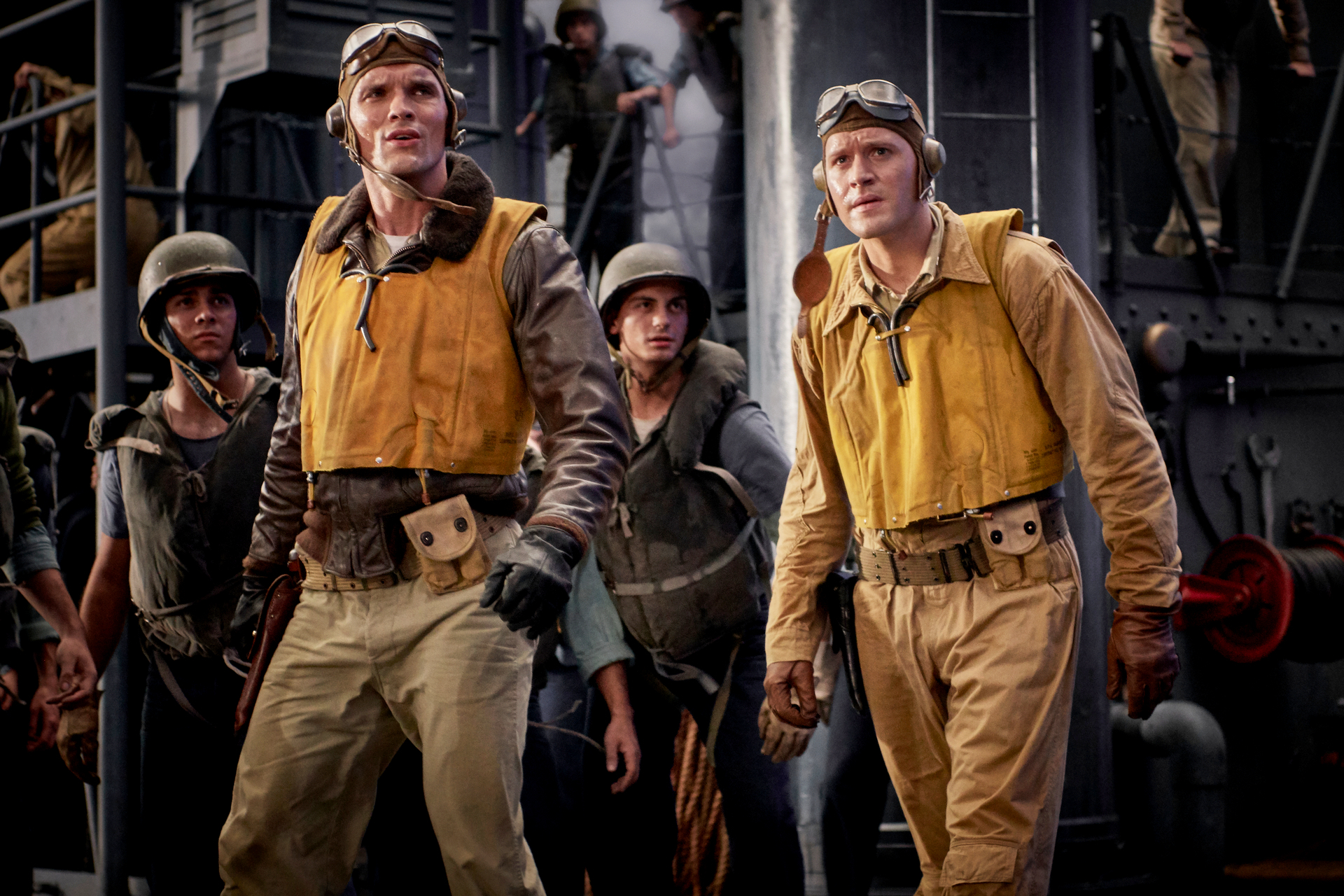

…Yes, there’s some language, as you will find in other movies attempting authenticity in this time period. This is an attempt (with some dramatization) to reflect real history, not sanitize it. Having sailors, aviators and soldiers say “aww shucks” or “golly gee, them Japs are bombing us” wouldn’t really cut it as a serious depiction of men seeing friends killed and maimed before them, now would it? It’s not overdone or gratuitous. That said, yes I realize it’s not “Pollyanna.” But unlike some similar movies I could mention there’s no sexual junk or other objectionable content… If you want to take students/children to see this to better understand what their ancestors lived through, please don’t let this rating keep you away.
As some secular critics who are sticklers for telling perfect history point out, there are many details in the timeline and events of the attacks that are not precisely followed. And the sheer intensity of the climactic aerial attacks on the Japanese fleet is overdone. But it does help the audience grasp the reality that these brave aviators faced without flinching, flying into what seemed like certain death, and/or flying beyond the point of no return with their fuel. The American pilots were flying mostly obsoleted and outgunned aircraft and were massacred as a result (for example, one squadron lost every plane and had only one survivor from the battle). But they kept coming and in the end their sheer persistence was just enough to overwhelm the exhausted Japanese defenses and turn the tide of the battle. And the war.
My Ratings: Moral rating: Average / Moviemaking quality: 4